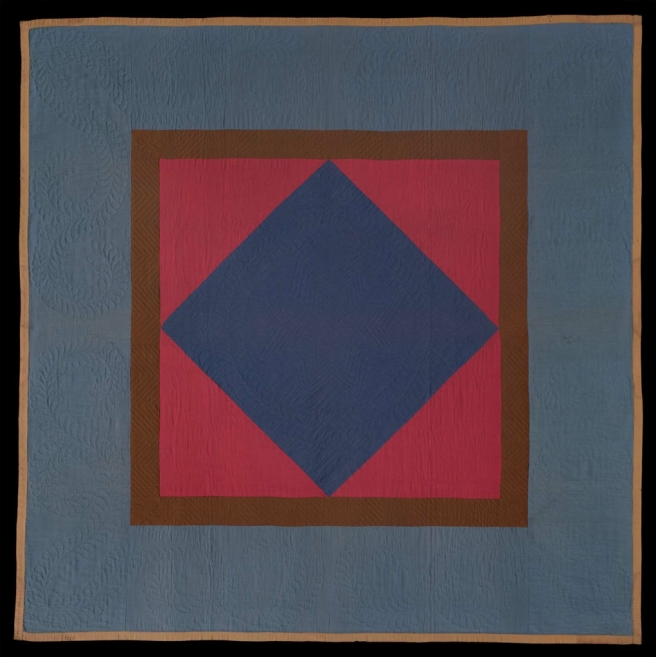
This Framed Diamond in a Square on point quilt was among five Amish quilts from the Pilgrim/Roy Collection carefully selected for the Museum by collector Gerald Roy at a time when the department of Textile and Fashion Arts was seeking to increase the depth and range of its 19th century quilts. This classic example is an early one from Lancaster County, Pennsylvania, a region distinguished by quilters who chose to adopt a limited repertoire of pattern types and variations that remained fixed, even as color, fabric and quality and quantity of needlework were changeable over time. Working within the constraints of what fabrics were available and which colors were socially acceptable within the community, Amish women were able to express their individuality by employing color, design, and needlework to create quilts with strong visual impact. Amish quilts became popular in the 1960s and 1970s when the color theories of Josef Albers and color field painting were gaining influence.
Click for description and collection data on mfa.org
Objects in Brief is a randomized showcase of the MFA, Boston’s encyclopedic Textile and Fashion Arts collections. A featured object is indicative of the author’s curiosity and chosen so she may learn about its material and structural properties, function, history, and greater story. These “quick studies” have led to more in-depth explorations posted in A Closer Look.
